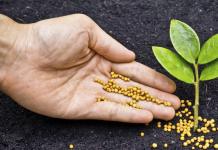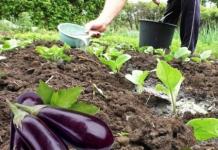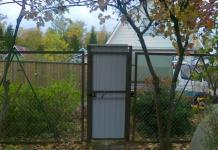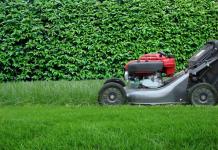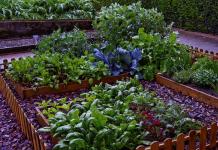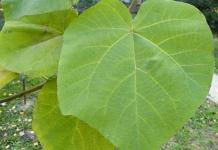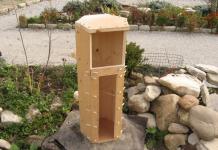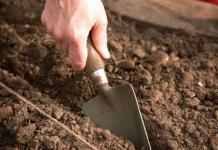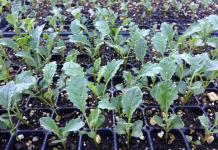Such a vegetable crop as eggplant belongs to the nightshade family. These plants are very fond of warmth, eggplants absolutely cannot tolerate frosts. Growing these vegetables, a lot of attention should be paid to the care and prevention of diseases. One of the important stages of control is timely watering, which we will discuss in detail in this article.

Growing features
When growing eggplant, you should first familiarize yourself with the characteristics of this crop.
- This vegetable is photophilous, it is better to plant eggplants in a lighted area. It is better not to plant seedlings very densely, and during cloudy weather a good solution would be to think about creating additional lighting. If there is not enough light for the eggplant, the growth of the bushes and the ripening time of the fruits will slow down, and in the end this will lead to a decrease in the yield.
- In addition to good lighting, vegetables love moist soil, a lack of moisture can also affect the slow growth and fall of flowers, and this will negatively affect the formation of ovaries.

- The eggplant has a superficial appearance of the root system, and yet it needs air supply. It is necessary to loosen so that the soil can be enriched with oxygen. You need to loosen the ground around the eggplant bush very carefully, without damaging the roots.
- The composition of the soil on the site greatly affects the quality of the future crop. Eggplant grows well in slightly acidic or neutral soils. The potassium content is considered the most important factor. Immediately after the appearance of the first sprouts, fertilizing can be carried out by adding phosphorus fertilizers.
- The normal growth of eggplant and its fruiting is strongly affected by temperature, so you need to constantly maintain 25-28 degrees.
- Prolonged ripening does not allow growing eggplant culture in any other way than seedlings.


We select water
Like any plant, eggplant responds very well to watering with soft water - rain or melt. Tap water can also be used, but it must be well infused so that the chlorine disappears.
It's a good idea to drizzle the eggplants with eggshell water. To do this, you need to place 10 eggshells in heated water and leave for a couple of days. After the end of this period, the plants can be safely watered - such water will give them the calcium and potassium they need for proper growth.
A tea solution will also be very useful. Tired of throwing away used bags? Why not use them on the farm, and there will be less garbage, and the plants will benefit. Pour boiling water over tea bags and let them sit for a few days. Then strain and water the eggplants. Such an infusion will be a valuable gift for the culture, because it contains a lot of useful trace elements.
Birch bark is another great way to water and feed your plants at the same time. It is poured with clean water and insisted for several days. It is noticed that after such top dressing, eggplant grows well.

Planting seedlings
Plant eggplant, or rather, the seeds of this crop, necessary in soil with a special composition, which includes:
- 5% sawdust or 5% sand;
- 5% biohumus;
- 10% of turf land;
- 20% humus;
- and 60% horse peat.
Seeds must be planted correctly, that is, in one row, the planting depth should be 1.5 cm. A distance of 6 cm must be left between two separate rows. Immediately after planting the eggplant, the beds are covered with polyethylene, so a greenhouse effect will be created. The temperature inside must always be maintained, the temperature should be about 25 degrees and not lower.

When the very first sprouts appear, the temperature is lowered, while increasing natural light - sunlight. After a few weeks, the seedlings can be transplanted into separately prepared containers, by which time the germinated seeds will already be strong enough.
Seedlings should be watered two days before moving. When the seedling has already been transferred, it is watered along the root so that the root system straightens out and the plant takes on a new place.
After moving, watering is stopped for 5 days, and then they act in accordance with the scheme described below. At the same time, you need to look at the condition of the plant - if you see that the bushes have begun to dry, watering starts earlier.

Watering
The seedlings of such a vegetable crop are moisture-loving. That is why it is necessary to frequently, and most importantly, timely water it. With insufficient moisture, the stem of the plant will become stiff, and this will affect the decline in the fruitfulness of the bush. There should also be no excess in moisture, since excess water in the soil will negatively affect the entire bush, which may soon get sick.

There is also a special scheme for watering seedlings:
- until leaves appear on the eggplant bushes, the seedlings are watered 1 or 2 times, the amount of water here should be calculated as follows: 1 square meter - 7 liters, then the number of watering increases up to 2-3 times, in this case 15 liters are spent per 1 square meter ;
- air humidity should remain 60%;
- the room where the seedlings germinate must be ventilated, only before that it is necessary to cover the seedlings.
Eggplant is best grown in open soil, regions with fairly warm mild climates are considered the preferred choice. With a high risk of frost at night or a sharp change in weather conditions, it is better to plant seedlings in a greenhouse.

Rules for watering in the open field
- Too cold water for irrigation can not be used, it is better to take warm, pre-settled. If you use cold tap water, all plants simply stop growing, drop their ovaries, and then die altogether. Low temperature during watering provokes the emergence of fungus, plants begin to weaken the immune system.
- Sprinkling of eggplant culture should not be carried out. Water simply should not get in and linger on the leaves of the bushes, since various diseases can appear in this way, the plant will be injured. Watering should be carried out directly under the root system. The best option is to pour water into the grooves prepared in advance next to the planted eggplant. Drip irrigation works great, this system is considered the most favorable and useful.

- The frequency of watering should be determined individually. Drying out or, conversely, oversaturation of the moisture content of the ground cover at the roots should not be allowed. In this case, you need a golden mean, while you need to focus on the age of the plants and weather conditions. Young seedlings are best watered once a week, preferably in the evening. When the bushes begin to bloom, watering should be reduced, but when fruits appear, on the contrary, increase the number of waterings.
- Do not forget about feeding. Fertilizing plants is carried out three times in one season. For the first time top dressing can be done already a few weeks after planting. The next is best done before the formation of buds. The process of feeding must be combined with abundant watering, so the plants will not receive chemical burns if the dosage is incorrectly selected. The final feeding process is needed so that the eggplants get the strength to ripen the fruits.
- The amount of water during irrigation is taken at the rate of 10-15 liters per m². At the same time, plants planted in a well-lit area should be watered early in the morning or after sunset. This will protect the leaves of the seedlings from thermal burns.

You will learn how to properly water and feed eggplants in the open field from the video below.
Note that getting a marketable crop of purple beauties is not easy even for experienced vegetable growers. Being a crop prone to a variety of diseases, not to mention pests, and quite demanding in terms of temperature and fertilizer, eggplant becomes a kind of test for the gardener. However, with patience and following all our recommendations, you will soon be able to pamper your home with “blue ones” of your own “production”.
Preparing the soil for planting ^
You need to plan the planting of capricious nightshade ahead of time, even in the fall. To do this, clean the greenhouse beds, removing dry stems, weeds and other plant debris from them. Then it is necessary to carefully shed the soil with clean water - at least two times.
This important operation cannot be ignored, as the excess fertilizer remaining on the surface will “leave” into the ground. We prepare the greenhouse soil for planting eggplants - we dig up the beds and remove the remains of previously fruitful plants. The next stage is soil disinfection, which will help destroy the pathogens in it. To disinfect greenhouse soil, you can use one of the following three methods:
- Thermal (thermal)
It consists in treating the surface layer of the earth with hot steam or pouring boiling water. A small amount of earth (for example, for seating boxes) can be heated in an outdoor stove on a metal sheet. It is important not to overdo it here: at t over 100 gr. Celsius, along with harmful ones, beneficial soil bacteria can also die;
- Biological
Very effective, but requires significant time and labor costs. The “worked out” layer of earth (about 25 cm) over the past few years is removed with a shovel. Stored in a stacked way (height - 1 m, width - 2.5-3 m), regularly interbedded with slurry. Acidic soils can be limed with "fluff" - 4 kg per 1 cubic meter of earth. The resulting stacks, ripening for 2-3 years, should be shoveled at least once every six months and weed shoots should be removed;
- Chemical
As disinfectants, dry bleach is mainly used (100 g per 1 m - with a layer of earth of 20 cm), covering it with a rake. Along with lime, formalin is widely used, effective, in particular, against the "black leg" of greenhouse eggplant.
To process 1 square meter of soil, prepare a solution of 250 ml of the finished 40% preparation and 10 liters of tap water. The treated soil must be covered with a film for a day. After drying, the prepared and disinfected soil is dug up or harrowed. In the spring, only loam will need to be dug up; for other types of soils, thorough loosening is sufficient. Eggplants (or blue ones) come in different shapes and colors
We apply fertilizer ^
It must be said that all vegetable growers who have ever grown eggplant in a greenhouse note their responsiveness to simple organic fertilizers. And it’s not so important what exactly you will add to the soil: manure or compost humus - “blue” will accept everything with gratitude, giving you an excellent harvest. So, if you settled on organic matter, take about 2/3 buckets of completely rotted manure.
For the same purpose, you can use the decayed contents of the compost heap. The amount of humus taken must be patched up on an area of greenhouse soil of 1 sq. m. As for the depth, fertilizer should be applied at the level of the so-called "arable layer" (ie, closer to the roots of future plants).
Decaying, the manure will enrich and improve the structure of the greenhouse soil, make it “warm” and loose, while reducing the acidity of the soil. Eggplants are very responsive to organic fertilizers Many gardeners, believing that “you can’t spoil porridge with oil”, in addition to humus, they also add ash. And here they are wrong, because as a result of the operation, the nitrogen necessary for plants completely evaporates. Therefore, wood ash (1 cup per square meter of greenhouse soil) is best used as an independent mineral fertilizer.
Planting seedlings ^
It's time to talk directly about how to grow eggplant in a greenhouse. The varietal variety of eggplant seedlings today is so great that the poor summer residents literally feel dizzy: here you have the early ripe "pot-bellied" Vikar, and the "lanky" Arap and even the unusually white Iceberg.
But finally, the choice has been made, and precious sprouts are waiting in the wings in the corner of your greenhouse. You need to take eggplant seedlings out of pots very carefully so as not to damage the delicate roots of the plant. Having leveled the beds, we begin to dig planting holes, the depth of which should not be more than 15-20 see. Before landing, about 2 liters of manganese-colored water should be poured into each "hole".
It is not necessary to deepen the seedlings strongly into the ground - it is enough to raise the level of the soil (compared to the "native" pot) by only 1 cm. Take out the plant carefully so as not to damage the still weak roots.
If the eggplant grew in a peat pot, you don’t need to take it out - plant it with it, then gently compact the soil and pour a little warm water again. Attention! The seedling planting scheme should be as follows: row spacing - 60 cm and at least 30 cm between the bushes. Thus, for 1 sq.m. greenhouse beds should have no more than 6 eggplants. Otherwise, planting density will not allow you to wait for a good harvest. Do not plant eggplants too closely, the distance between individual bushes should be at least 30 cm
Bush formation ^
When young plants reach a height of 25 cm, it is necessary to pinch (i.e. remove) the upper part of the main stem. After this manipulation, side shoots will begin to grow intensively.
Of these, you need to leave 5-6 (no more) of the strongest, and pinch the rest as well - in the future this will help to get a compact and strong bush. Further, the eggplant will need to be observed, periodically removing barren shoots, deformed fruits and yellowed leaves. For greater stability, the plant is attached to greenhouse supports with strips of woven material. Tall hybrids require support and garters. him it will be quite a long time.
In some cases, plants adapt up to 20 days. During this period, in no case open the greenhouse: provide seedlings with peace and sufficient shading.
We create tropical conditions for eggplants ^
Eggplants are extremely thermophilic: at a temperature of +15°C they stop growing and developing, at +13°C they begin to turn yellow and wither, and they cannot stand frost at all - they are irrevocably destroyed by zero temperature. At the same time, when in the summer heat the indicators of greenhouse thermometers go off scale for 35-40 degrees, dusting and fruit set can completely stop. 26-28 degrees.
To do this, in the heat, you need to ventilate the greenhouse more often, opening the doors or transoms on only one side (this way you can avoid drafts). If the day is unbearably hot, in addition to ventilation, you can pour plenty of water on the walking paths. At night, in all weather conditions, the greenhouse door is closed.
Watering and feeding eggplants in the greenhouse ^
"Blue" - big "lovers" of nitrogen. The first top dressing (3 tablespoons of "azofoska" per 10-liter bucket of water; consumption per 1 plant - 0.5 liters) is usually carried out a couple of weeks after planting the bush for a permanent place of "residence".
When the fruits are tied, it’s a good idea to feed the eggplant with mullein infusion (1:10) or mash based on weeds and yeast (1:5). In industrial greenhouses, eggplants are grown in separate containers using a balanced diet. once, during the planting of seedlings, pour one third of a teaspoon of AVA complex fertilizer into each hole. After that, once every 10 days, water the eggplants with an infusion of fermented herbs (a liter per bucket of water) - this will be quite enough for the plants. During the period of mass fruit formation, you can “help” the bushes by foliar application of microelements, and for better pollination, spray with the preparation “Ovary” or “ Bud. "The abuse of organic matter can provoke a rapid increase in the green mass of eggplant (shoots and leaves), to the detriment of flowering and subsequent fruiting.
If this has already happened, immediately switch to potassium top dressing. As for watering, it should be regular and, so to speak, moderately plentiful. This means that every effort must be made to ensure that the soil is always moist with relatively low air humidity.
This can be achieved by watering eggplants strictly in the morning, mulching the soil with straw (agrofiber, old newspapers, fallen needles) and airing the greenhouse. -20 cm. Try to pour under the root so that moisture does not soak the leaves.
After 12 hours, be sure to loosen to a depth of 3 cm so that an earthen crust does not form. Remember that high humidity threatens eggplants with fungal diseases, and insufficient watering will result in small and tasteless fruits. Remove purple “barrels” in the phase of full technical maturity, when they are not they will only pick up a thick color, but they will also reach the size and shape prescribed for a particular variety. The pulp of a ripe eggplant is juicy and elastic, the seeds are soft (easily cut with a knife).
Each subsequent harvesting is carried out at intervals of a week, cutting off the ripe fruits along with the stalk with a sharp pruner. The harvested fruits do not lie for a long time, therefore, until they have lost their marketable qualities, they are sorted and processed. Eggplant will surely thank you for good care with a high yield. Along with culinary, eggplants have a reasonable therapeutic and prophylactic value.
Regular consumption of these tasty and healthy fruits can lower blood cholesterol levels, remove excess uric acid salts from the body and improve metabolic processes. Due to its low calorie content, eggplant can be safely recommended to obese people.
How to grow eggplant in a greenhouse. Eggplant care in the greenhouse
An exotic native of India, eggplant is a delicious and incredibly healthy vegetable that has long won the love and respect of domestic gardeners. It is quite difficult to grow it in the temperate latitudes of Russia.
This gentle southerner reacts even to small temperature changes, so planting eggplants in a greenhouse is the best solution. In an enclosed space, excellent conditions are created for the development and growth of vegetables, similar to the humid tropical heat of Burma and India. Let's talk about how to grow eggplant in a greenhouse, what questions may arise and how to care for plants.
Rules for growing eggplant
The main condition for the proper development of eggplant is growing them separately from other crops. The only exception is tomatoes. This is the only portable neighborhood.
Eggplant puts forward special requirements at almost all stages of development: when preparing the soil, planting seedlings, irrigating and maintaining the temperature regime. But the efforts of gardeners are rewarded with a magnificent harvest of the legendary "blue", until recently inaccessible, but today very familiar in Russian gardens. We will carefully consider each wish of the handsome eggplant and learn how to get along well with him.
Soil preparation
Eggplant care in a greenhouse begins with soil preparation. It is necessary to take care of the soil, since the eggplant is demanding and very capricious, it is sensitive to the composition of the soil and must be planted in properly prepared soil.
Soil in the greenhouse you need:? update by removing fragments of roots and remnants of above-ground parts of plants;? disinfect by dissolving 60 g of copper sulfate in 10 liters of water. Eggplant does not accept acidic soils.
To reduce acidity, it is necessary to add dolomite flour in the amount of 50-60 g per 1 sq. meter. Fertilizers are necessary for good development of eggplants. The best top dressing, of course, is organic - manure or compost humus.
It is added to the soil before planting at the rate of 0.5 buckets per 1 sq. meter. In addition to organic, complex mineral fertilizers with a balanced composition of nitrogen and phosphorus supplements are also needed. Another condition necessary for the successful rooting of seedlings is that eggplants need to be planted in the ground warmed up to +15 ° C.
We plant seedlings
When answering the question of how to grow eggplant in a greenhouse, it should be remembered that, in addition to soil preparation, there are many different nuances. Well-dug and cultivated soil in the greenhouse should be leveled before planting.
Then it is necessary to mark the holes with a depth of 10-15 cm, maintaining an interval of 45-50 cm between them. The row spacing is 60 cm. When planting seedlings, 1.5 liters of manganese or Fitosporin solution are poured into each hole and a handful of wood ash is added.
It is important to control the temperature of the soil and air in the greenhouse. Planting should be carried out when the soil warms up to +15 ° C, and the air - up to + 18-20 ° C. Eggplant seedlings require careful handling - they are very fragile.
Planting plants should be carefully, trying not to damage the delicate root system. Before planting the seedlings in the ground, they are pre-watered so that it is more convenient to take them out of the containers, and the clod of earth on the roots does not crumble.
The seedling should be planted a little deeper than the level at which it was in the cassette or container. Upon completion of planting, the soil is compacted and watered again.
How to water eggplant in a greenhouse
Having completed the initial stage, proceed to the next. It starts with watering, which is very important for the culture. Eggplants love water, so they need to be watered regularly.
If a moisture deficiency occurs, the flowers will begin to crumble, and the fruits will significantly lose their quality and size. The main condition for irrigation: water must be warm, its temperature is not less than + 23 ° C.
The use of cold water can negate all efforts to grow vegetables. The first watering is carried out after 5 days after planting.
Subsequently, the regularity of watering should correspond to once a week. In the process of watering, eggplant leaves should not be wetted, water should flow under the root. It is necessary to ensure access of water to the roots, it should not drain down the bed.
Therefore, you need to periodically loosen the earth. The frequency and intensity of watering increase when the plant begins to bear fruit: now you need to water it 2 times a week, preventing the soil from drying out.
To obtain a large crop of eggplant in a greenhouse, it is necessary to create ideal conditions: high soil moisture with comfortable air humidity. It is better to water vegetables in the morning and be sure to arrange ventilation. This is necessary to prevent the occurrence of fungal diseases.
top dressing
How to grow eggplant in a greenhouse? In addition to timely watering for good crop development, you need to remember the need for top dressing. For the entire growing season, fertilizers will need to be applied 3-4 times.
The first time the plant is fed 2-3 weeks after planting. The culture during this time manages to take root well and develop a root system that can receive nutrition from the soil. The second top dressing should be carried out before the eggplant blooms.
Until the plants bear fruit, they should be fed with complex universal fertilizers, for example, Mortar or Kemira, dissolving 35-40 g of the product in 10 liters of water. When fruit is set, they switch to nitrogen and phosphorus supplements: 30 g of superphosphate and ammonium nitrate per bucket of water.
For better eggplant development, organic fertilizers should be alternated with mineral fertilizers, but neither one nor the other should be abused. It should not be forgotten that during the fruiting period, plants are especially vulnerable to various pests. Therefore, from time to time, simple prevention should be carried out: periodically sprinkle the aisles of plants with wood ash.
We observe the temperature regime
Do not forget about maintaining the optimum temperature in the greenhouse. It fluctuates from +25°С to +28°С. Exceeding the 35-degree barrier will result in wilting of the fruit, and a decrease to + 13 ° C - stunting.
Therefore, it is necessary to constantly control the temperature regime: ventilate the greenhouse in hot weather, while avoiding drafts, since the eggplant can lose color, and also insulate when it gets cold, of course, to the extent possible. Failure to follow these rules can seriously affect the yield.
Therefore, answers to questions, for example, about why eggplants wither in a greenhouse, should be sought precisely in the failure to follow the recommendations for growing vegetables. Withering of eggplants can occur due to careless watering, lack of loosening, improper ventilation, or, conversely, a draft that has arisen.
Or maybe the eggplant was the victim of an attack by some disgusting infection. There can be any number of reasons, but in order to exclude the maximum number of them, one must adhere to the indicated conditions.
Special conditions for good development
A few words about greenhouses. With proper care, plants feel good under any shelter. But from a purely practical point of view, eggplants in a polycarbonate greenhouse have more comfortable growing conditions.
In such greenhouses, it is easier to care for them, properly ventilate, water and notice pests in time. Greenhouse crops are always more delicate and fragile than those that grow in the open.
When tying tall eggplant varieties to trellises for the correct formation of a bush, this should not be forgotten. Low-growing varieties do not need a garter.
It is not necessary to pinch eggplants; it is enough to remove withered leaves and underdeveloped ovaries from the stem. If eggplants are not tied in a greenhouse, you can help them by dissolving 2 g of boric acid in 10 liters of warm water and spraying the plants abundantly.
After some time, you should feed them. The "blue ones" react sharply to the lack of fertilizers. For example, eggplants turn yellow in a greenhouse from a lack of nitrogen, and leaves extended at an acute angle to the stem are a sure sign of phosphorus starvation. Improper planting care - watering with cold water, drafts, too high humidity, as well as untimely nitrogen fertilization can lead to the dropping of flowers and ovaries.
Eggplant diseases in the greenhouse
Unfortunately, eggplant is a very vulnerable vegetable. He has many enemies, such as tobacco mosaic and late blight. In the fight against them, the preparations "Fitosporin" and "Zircon" have proven themselves well.
Preventive watering with solutions of these products will help protect eggplant from late blight and tobacco mosaic. And pre-sowing treatment of the soil with preparations containing copper will neutralize the earth.
Viral diseases
Eggplants often suffer from Fusarium. This fungal disease is detrimental to the plant. The fungus, penetrating into the culture through the root, affects the entire vascular system. This is why eggplants turn yellow in a greenhouse.
This is the first sign of Fusarium. Then the leaves wither and fall off. Since the vascular system is affected, it will not be possible to save the plant.
On the transverse section of the stem, you can see a change in the color of the vascular ring - it becomes brown, and on the root collar there is a pinkish coating of fungal spores. Infected seeds may be the cause of the problem. In this case, you will need to change them.
Failure to comply with agricultural practices for growing eggplant can also cause various viral infections. Therefore, the fight against them includes not only the treatment of crops with drugs, but also various agricultural practices. How to grow eggplant in a greenhouse without viral diseases?
Let's try to understand what preventive measures should be taken.
Blackleg
The black leg fungus causes thinning and darkening of the root neck. When affected by this virus, the plant begins to gradually fade, and when it passes to the root system, it dies.
Usually the black leg affects the seedlings, but it happens that the high soil moisture in the greenhouse awakens a virus that accidentally enters the ground. To avoid such failures, the ground in the greenhouse is completely changed or disinfected with a bleach solution. And in order to prevent the emergence and development of the black leg, you should not thicken the crops, avoid temperature fluctuations and do not pour the plants. Affected plants must be removed immediately, the soil loosened and sprinkled with ash.
Mosaic
Mosaic is a disease characterized by variegated mosaic-green coloration and deformation of the leaves, as well as yellow spotting on the fruits. Such a lesion can cause poor-quality seed material or mechanical damage when transplanting seedlings.
Pre-sowing half-hour treatment of seeds with 20% hydrochloric acid will help save plantings from mosaic damage. If a disease is detected in a greenhouse, diseased plants must be removed and burned, and garden tools must be disinfected.
Gray rot
Gray rot appears as dark growing water spots on all above-ground parts of the plant, subsequently forming a gray coating. High humidity in the greenhouse acts as a catalyst for the development of the disease. When eggplant is affected by this fungus, special treatment of plants and soil with fungicides is needed, removal of infected crops and all plant residues from the greenhouse after harvesting vegetables.
Pests
Eggplant diseases in the greenhouse are caused not only by viruses, but also by pests. Frequent but uninvited guests are slugs, spider mites, whiteflies, Colorado potato beetle and aphids.
The existing drug Strela, which is harmless to humans, is quite effective in pest control and can be used in greenhouses. Eliminates slugs loosening the soil with soil treatment with dry mustard powder or ground pepper mixed with wood ash.
Spoils the mood of gardeners with aphids on eggplants in a greenhouse. Karbofos is used against it, if the fruits have not yet set, or they are sprayed with an infusion of wood ash, which is prepared as follows: 1 glass of ash is infused for a day in 10 liters of water.
Beetles are harvested by hand. Eggplant care in the greenhouse is carried out throughout the season. Maintaining order in the eggplant beds leads to the desired result: the collection of vegetables begins when the size and color inherent in the variety are achieved.
Eggplants, along with potatoes, tomatoes, vegetable peppers, belong to the nightshade family, but planting and growing eggplants in the open field have their own characteristics: 1. eggplants do not tolerate frost, especially young seedlings planted in open ground in spring; 2. if there is not enough moisture, buds and ovaries fall from the plant, and the fruits themselves become ugly; 3. soil fertility is important for the "blues" - the best harvest can be obtained on fertile and light soils; 4. culture loves bright daylight hours, which last no longer than 12 hours; 5. "blue" need more heat than peppers or tomatoes - at temperatures below +20 ° C, the process of eggplant pollination and fruit growth stops. It is important to follow the correct crop rotation process: it is allowed next to tomatoes and peppers, but not after them. After nightshade, including themselves, eggplants can be planted only after 3 years.
Almost all other vegetable crops are considered acceptable precursors of eggplant. They grow well after onions, cucumbers, carrots, legumes, early cabbage and melons. Learn more about crop rotation here.
How to prepare a bed for growing eggplant? It is recommended to provide an eggplant bed in a sunny place, protected from the wind and cleared of weeds. An additional bonus would be if your site has sandy or light loamy soils.
If this is not the case: 1. turfy soil with humus must be introduced into peat soil; 2. it is important to add sawdust, peat and clay soil to sandy soil; 3. in heavy soils, it is necessary to add peat and humus during the autumn digging of the earth. Adding straw cutting, river sand or sawdust for autumn digging will also help to make the soil lighter. To increase the level of soil fertility, it is recommended to apply fresh manure in autumn, and only rotted manure is allowed in spring, otherwise, all the forces of the plant will be spent on the formation of leaves, and there will be no fruit at all. When using the seedling method of planting eggplants, the soil must be prepared in the fall by digging them to a depth of 30 cm and adding the necessary components with fertilizers (urea, superphosphate, potassium sulfate), and it is important to remove all weeds.
Pest larvae and remaining weeds are destroyed in April, after which the soil is rolled. These works should be carried out after rain, so that moisture is better preserved in the ground. For eggplant, a bed up to 30 cm high and up to 1 meter wide is perfect.
The length is determined by each gardener individually. The prepared bed should be leveled with a rake and shed the ground with a heated solution of mullein or special Effekton fertilizer.
Seedling method of growing eggplant In the climate of the Russian Federation, it is better to grow eggplant through seedlings, giving preference to popular early varieties that, despite the short summer, have time to ripen. Before planting, the seeds for seedlings must be pickled with a solution of potassium permanganate and heat treated, leaving them in hot water (t +50 ° C) for 20 minutes, then germinate. For seedlings, the soil must be mixed from soddy fertile soil, sand and humus in proportion 5:1:3.
Nitrogen, phosphorus and potassium fertilizers are additionally applied to the ground. Seeds should be sown in small pots or boxes with soil mixture, providing a temperature of +25 ° C until the first shoots appear, and then reduce the temperature to +13 ° C at night and + for 5 days. 16 °C during the day. Further, the seedlings grow at +28 °C on sunny days and +18 °C on cloudy days.
Before planting the seedlings in the garden, they should be hardened for two weeks, giving them the opportunity to gradually get used to the conditions of the street. Seedlings must be watered systematically to prevent the soil from drying out. When the first two true leaves appear, you need to feed in the form of a solution of superphosphate with urea and potassium salt.
The second top dressing is carried out after 2 weeks. After the plant has formed a good root system, and it reaches 10 cm with 5-7 true leaves, you can start planting them in the garden. Of course, if warm weather is established, and the frosts have passed.
Planting eggplants in open ground. Care. The day before planting, the finished seedlings must be carefully watered and watered again until the seedlings are removed from the pots or from the box.
The process of planting eggplants directly into the ground proceeds similarly to planting peppers: according to the established scheme, furrows or holes are dug in the garden bed, where a large amount of water is poured, and eggplant seedlings are planted in the resulting “dirt”. The earth around the plants must be compacted by pouring a layer of mulch from peat or dry earth on top.
The planting scheme should be chosen based on information about how eggplants of certain varieties grow - if we are talking about compact plants, it is enough to leave 40 cm between seedlings, and for high varieties you need at least 50 cm. When growing eggplants in open ground in a seedless way germinated and slightly dried seeds should be immediately planted in the ground after its top layer reaches a temperature of +15 ° C. In the initial period, due to slow growth, radishes are sown along with eggplant seeds so as not to lose eggplant rows in the garden.
Due to the fact that eggplants do not like night colds, at first, a film should be stretched over them on wire arcs. If eggplants were planted in the ground in mid-May, they should be covered with a double layer of film. By mid-June, the film can be removed.
But even in summer, it is important to monitor the temperature all the time and cover the eggplants at night if necessary - when a cold snap is promised. growing eggplant outdoors you need to be prepared for the fact that the first 2 weeks they will grow extremely slowly. You can help the process by shallow loosening the beds so that the maximum amount of air enters the roots.
Proper care of eggplant in the beds: 1. the soil should always be slightly moistened - watering should be carried out with water heated under the sun's rays; 2. in summer it is important to regularly loosen the ground, not allowing it to compact, especially after rains; 3. 3 top dressings with mineral fertilizers, slurry or bird droppings are enough for eggplants for the whole season (1 top dressing is carried out 10 days after planting eggplants, the second - after 20 days, the third - at the beginning of the fruiting period); 4. hilling eggplant can stimulate the development of adventitious roots, which will increase the yield of fruits; 5. weeds should be removed in a timely manner and ensure that no diseases or pests appear on eggplants. Harvesting can be done about a month after flowering, when the fruits acquire a glossy appearance and a characteristic color for the variety. If the eggplants turn brown, they are overripe and their flesh is rough and tasteless.
When undeveloped large ovaries remain on the bushes until the autumn cold snap, the plants must be dug up with roots and transplanted into a greenhouse. Eggplants must be carefully cut with a pruner or a knife with a stalk, without damaging the shoots of the plant. The collected fruits should be eaten in a short time or prepared from them for the winter, due to the fact that long-term storage of eggplant is akin to a real art that not everyone can master. Here are all the rules growing eggplant outdoors, following which you are sure to collect a rich harvest of delicious fruits.
Growing eggplants in open ground
Greetings, dear friends! Earlier, I already told you about how to properly grow eggplant and pepper seedlings, and today's article is devoted to when and how to properly plant eggplant and pepper seedlings in a permanent place and how to carry out growing eggplant outdoors from planting to full maturity.
Preparing the garden for eggplant
Under eggplants, a fertile site protected from the winds, sunny, weed-free, fertile should be allocated. It is possible that previously green crops, root crops, legumes, and cucumbers were grown in this place.
You can not plant eggplant where pepper, tobacco, physalis, tomatoes, potatoes, and the same eggplants grew in the previous year. Don't forget about crop rotation on the site. The ridges should have good drainage, and at the same time retain moisture well.
- If the soil of your site is loamy, add one bucket of rotted sawdust, two buckets of peat and a bucket of rotted manure for each square meter. .If the bed is sandy - add two buckets of clay soil, humus and peat, plus one bucket of sawdust. If the soil on the bed is peat - add one square meter per bucket of ordinary soddy soil and humus.
In addition, for each sq. meter beds should be made:
- 1 teaspoon urea 1 tablespoon potassium sulfate 1 tablespoon superphosphate 1 cup wood ash
Fresh manure should not be added, since in this case the eggplants will give a strong leaf mass, and they simply will not have the strength to form fruits. The soil must be dug up about 30 centimeters deep. The bed is best made high, up to 25 - 30 centimeters high. As for the width, a bed no wider than 90 - 100 centimeters will be convenient. The length of the bed is arbitrary, according to your desire. After digging, you need to level the surface and shed the soil with one of the following solutions:
- "Sodium humate" (per 10 liters of water 1 tbsp) at the rate of 3.5 - 4 liters of solution per square meterEffecton fertilizer (per 10 liters of water 2 tbsp) at the rate of 3 - 4 liters per square meter. meter Hot solution of mullein (80 - 90 degrees) - to prepare a working solution in 10 liters of water, dilute 0.5 liters of mushy mullein.
Now you can land.
Planting eggplant and peppers
There are various schemes for planting eggplant and peppers. Most convenient to carry out growing eggplant outdoors at a distance between rows of 55 - 60 centimeters and at a distance of 40 - 45 centimeters between plants in a row.
You can also use a square-nested landing pattern of 60x60 centimeters. At the same time, one eggplant plant and two pepper plants are placed in each hole, or according to the scheme of 70x70 centimeters, with such a distance between the holes, two eggplant plants are planted in each of them, and three pepper plants are planted in each hole.
By the way, since I mentioned pepper here, you need to remember that sweet and bitter peppers should be planted separately, at a distance of at least 20 meters from each other, in order to exclude the possibility of pollination of these plants. Otherwise, grown and pollinated sweet peppers will be bitter. Eggplants and peppers should be planted in the evening.
It is necessary to deepen the plants to the first pair of true leaves. The shoots and leaves of eggplants and peppers are very fragile, tender, break easily, so do not forget to put a peg for each plant when planting for further garter. The peg should rise above the ground by at least 60 centimeters. Eggplant seedlings are planted in open ground from mid-May to June 5 with mandatory shelter with a film in case of a threat of night cold.
A clean film is stretched over wire arcs, 1 meter high from the base of the bed. If you planted your seedlings in mid-May, then the bed should be covered with a double layer of film, because young eggplant and pepper seedlings cannot withstand even a low plus temperature of +2 (+3) degrees.
It is permissible to open the protective film only when the weather is really warm, usually from June 15th. When growing eggplants in the open field, it is very important, even in summer, to monitor the air temperature and, at the slightest suspicion of a night cold snap, cover the seedlings for the night.
Good results are obtained if the covering material is not removed from the garden at all, but only occasionally lifted from the south or west direction. These are plantations of tall crops, such as leeks, chard, beans, beets, which are grown in seedlings in advance, especially for this, and planted around the garden at the same time as planting eggplant and peppers. During the first two weeks after planting, the plants develop and grow very slowly.
To help them at this time, shallow loosening should be carried out to improve air access to the roots. Also at this time, it is worth delaying watering and giving eggplant foliar top dressing (1 teaspoon of urea and 1 tablespoon of “drops” per 10 liters of water).
Watering eggplant and peppers
In both eggplants and peppers, the lack of soil moisture, especially at high temperatures, causes the leaves and buds to fall off, as well as the stems to become woody. Eggplants and peppers are watered as follows:
- Before flowering - once every 6 - 7 days at the rate of 10 - 12 liters per 1 sq. meter, naturally at a time when there is no direct sunlight. If it is hot, then the number of waterings per week should be increased to two.
- During the period of flowering and fruiting, eggplants and peppers should be watered only under the root, once or twice a week, depending on the weather, spending 10 - 12 liters of water per 1 sq. meter.
Since many summer residents can only get to their site on weekends, the beds can be watered at the rate of 15 liters of water per 1 sq. meter. Do not forget that the water for irrigation should always be warm, at least 25 degrees. If you water the eggplants with cold water, the growth of your plants will stop, which means that the flowering and ripening of the fruits will be delayed. Over the summer, at least 4-5 loosening of the soil should be carried out, followed by hilling or additional soil mixture under the root.
Eggplant and pepper dressing
Top dressing during flowering:
- Composition 1: In a 100 liter barrel, you need to dilute half a liter of Effekton liquid fertilizer, stir well and pour 1 liter each. for each plant.
- Composition 2: This is a liquid manure - herbal top dressing. It is done in the following way. In a 100 liter barrel, you need to place finely chopped nettle, dandelion leaves, mother and stepmothers, plantain - only 5 - 6 kilograms of green mass. Here you also need to add ten tablespoons of ash and one bucket of mullein. The barrel is filled to the top with water and its contents are thoroughly mixed. After 7 days, an excellent liquid top dressing for eggplants, peppers and other plants is ready. The solution before feeding should be mixed again and watered 1 liter per plant. There are other folk recipes for liquid herbal supplements, which you can read about HERE.
Top dressing of eggplants and peppers during fruiting
- Composition 1: Pour one bucket of bird droppings of a mushy consistency into a hundred-liter barrel, pour two glasses of nitrophoska, pour it all with water and mix well. The solution will be ready in 4-5 days. Immediately before fertilizing, the solution must be mixed again and poured over the eggplants at the rate of 1.5 - 2 liters per plant. Ingredients 2: Ten tablespoons of Agricola-Vegeta liquid fertilizer should be placed in a hundred-liter barrel, stir well and pour the eggplants with this solution or peppers 1 liter per plant.
After about 2 weeks, as you make top dressing with one of the above solutions, you need to do another top dressing:
- Composition 1: Pour one bucket of mullein, half a bucket of bird droppings into the barrel and pour urea here (one glass), pour water and stir. When 3 - 5 days have passed, you need to stir the solution again and pour eggplants over 5 - 6 liters per square meter. meter. Ingredients 2: Pour a half-liter bottle of Effekton fertilizer into a barrel, stir and pour this solution over the plants, 5 liters per square. Meter.
Formation of eggplant and pepper plants
In order to get a compact eggplant or pepper bush with well-developed side shoots, the top should be removed on the main stem. This should be done when the eggplant plant reaches a height of 25 - 30 centimeters, and pepper - 20 - 25 centimeters. (See figure). Plants pinched in this way will begin to branch rapidly.
Of all the new shoots, only 4-5 upper shoots (stepchildren) should be left, and all other stepchildren should be removed. On those shoots that have remained and the crop of our eggplants and peppers will be formed.
At the same time, 16-20 fruits are left on eggplant plants, and 20-25 fruits on pepper plants. In principle, you can not pinch, but remove extra stepsons. If the weather is hot and humid, then the removal of the lower stepchildren must be carried out, but in dry and hot summers, pinching is not carried out so that the leaf mass of the plant protects the soil under the bush from excessive evaporation of moisture .Sometimes on eggplant and pepper plants, you can observe the appearance of curved non-standard fruits.
This is because pollination has not been completed to the full extent. To prevent this from happening, it is necessary to carry out additional pollination of flowering eggplants and peppers manually. To do this, choose a hot, sunny, calm day and lightly shake the plant.
How to get your own seeds
Conducting growing eggplant outdoors, you will certainly want to get your own seeds for later cultivation. To do this, two or three fruits should be left on one or several selected eggplant plants, and the remaining small fruits and flowers should be removed so that all the power of the plant is spent on the formation of seed fruits.
Upon reaching full maturity, these fruits should be cut and left in a warm place for 7 to 10 days. Then the fruits must be cut, the pulp must be separated along with the seeds in it, placed in a glass jar and left to ferment for 4-5 days. After that, you need to rinse the seeds with water, and dry the already clean seeds for 12 - 14 days at a temperature of 28 - 30 degrees. Eggplant seeds prepared in this way can be stored for up to 5 years in a dry place, in paper bags. To receive by e-mail new articles of my site, I suggest you fill out the form below, and then confirm your subscription by clicking on the link in the letter that came to you.
Site news in your email! Enter your Email
“Overseas caviar, eggplant” is a phrase known to everyone. Currently, eggplant has become such a common culture that you will not surprise anyone with it. However, the vegetable requires compliance with certain rules for planting and care, which will ensure the harvest. The air temperature in the room when growing seedlings of some vegetable crops. It is worth noting that eggplant is a rather picky plant.
We plant seedlings correctly
To plant seedlings and get strong and healthy plants, you need to prepare seeds, soil and plant eggplants in pots correctly.
Preparing seeds for sowing
Seed preparation. First, prepare the seeds. They are able to remain viable for 8 years. However, it is recommended to use seeds with a shelf life of no more than 4 years.
Eggplant germination should begin from the beginning of February. Seeds must be disinfected before planting. The most commonly used solution is potassium permanganate.
To do this, 1 g of potassium permanganate is dissolved in 100 ml of water, then the seeds are dipped into the resulting composition. Keep them in solution for half an hour. Then the eggplants are thoroughly washed with clean water. Another way to disinfect is to use aloe juice.
To do this, cut off the leaves of aloe, keep them in the refrigerator for more than 6 hours, then squeeze the juice. Seeds are lowered into the resulting liquid and kept in it for a day. There is a third method, the most time-consuming, but also the most effective.
It is necessary to prepare a solution: 3 g of potassium permanganate, 0.6 g of boric acid and 0.3 g of copper sulfate are added to 3 liters of water. Seeds are lowered into the solution and aged for 20 minutes.
Each vegetable crop has its own agricultural technology. One of the key components of care is watering. Sufficient water and regular hydration is necessary for full development. In the article we will tell you how to properly water eggplants in a greenhouse built of polycarbonate.

Introduction
Some vegetable crops grown in the country actively bear fruit in a warm and fairly humid climate. Among them are eggplants. It is very difficult to achieve a rich harvest in the northern regions of the country, as well as in the middle lane. Changeable weather conditions, cold snaps, short summers and daylight hours - all this negatively affects the development and fruiting of the plant.
To protect the flora from the vagaries of bad weather and harvest a rich harvest, vegetable growers protect fruit crops with the help of buildings made of durable and lightweight material - polycarbonate. On the basis of hotbeds and greenhouses, you can create optimal conditions, regardless of the weather outside the window. In an artificially created microclimate, you need to know how often to water vegetables.


Plant characteristic
Before talking about the features of irrigation, it is necessary to characterize this vegetable crop. Residents of the southern regions call this plant "blue". Fruits have not only a wonderful taste, but also a number of useful trace elements. Few people know that the well-known vegetable from the nightshade family is of tropical origin. For this reason, the plant does not tolerate the climate of the northern country.
Eggplants need careful care. To obtain a rich and stable harvest, it is necessary to adhere to strict agricultural practices in the process of planting and growing. The culture is very similar to sweet pepper in terms of cultivation.
These are light-loving plants, so cloudy weather and lack of sunlight adversely affect the development of the plant and the quality of the fruit. Vegetables can ripen for a long time and have small sizes.
Also, vegetable crops need abundant watering. Sufficiently moist soil is a prerequisite for growth and harvest. With a lack of water, the growth process slows down significantly, the number of inflorescences decreases, and the size of the fruit leaves much to be desired.

First watering eggplant
For the first time, pre-prepared beds intended for planting seedlings are watered with water. Remember that during this period the plants are still small and do not require a large amount of moisture.
The main thing is to follow a certain order in this process.
- Watering the land is carried out with a watering can. 5 liters of water are used per square meter of the plot. The liquid must be completely absorbed into the soil.
- With the help of improvised means, shallow pits for seedlings are prepared. Use shovels, cuttings and other tools.
- One seedling per hole. When planting, pinch off 1/3 of the lower part of the root.
- The soil around the plants must be carefully compacted.
- The earth is mulched. For this, peat is used, as well as crushed tree bark.
- Plants are watered with warm water a second time, in the late afternoon. The volume of water is the same.
- Further watering is carried out once a week. In the hot season, if necessary, the volume of water and the frequency of irrigation can be increased.


Bloom
If the plant began to bloom, it is time for special care. During this period, the culture needs not only watering, but also feeding. For fertilizer, various compositions of chemical and organic origin are used. Products must be alternated and combined with watering.
Once every 7 days, it is necessary to fertilize the plants according to the following scheme:
- the site is moistened using 5 liters of warm water per square meter of plantings;
- when the earth completely absorbs the liquid, it is necessary to irrigate with a feeding composition, in the same amount;
- at the end of work, you need to slightly loosen the ground or mulch;
- when using dry fertilizer formulations of organic origin, increase the volume of water to 15 liters.


Fruiting
Every experienced summer resident knows that the appearance of ovaries is a signal to increase the frequency of watering the plant. During this period, moisture plays a particularly important role in the formation of the future fetus. Abundant watering is necessary for the plant for a rich harvest.
During the fruiting period, eggplant should be watered 2 times a week. A maximum of 3 liters of liquid is used per shrub, which is 15 liters of water per square meter of plantings.
As soon as the vegetables begin to ripen, it is necessary to cut the amount of top dressing. Feeding should be completely stopped two weeks before harvest.

Rich Harvest Rules
Growing eggplants in certain regions of the country is very problematic, but with due diligence, you can achieve excellent results.
- The first rule is to carefully choose seedlings. There are many different varieties with certain characteristics. Take the time to compare the pros and cons of each species to make the right choice, given the local climate.
- Monitor the condition of the greenhouse or greenhouse. There should be no drafts inside the building. Be sure to install additional light sources. In regions with severe winters, heating is indispensable.
- Do not overdo it with watering and fertilizing. An excess of moisture and nutrients will adversely affect the condition of the plant.
- Do not experiment with fertilizer formulations. Use only the recipes carried out or purchase ready-made solutions, presented in abundance by stores.
- Inspect plants for signs of disease. If small defects are found, take appropriate measures.
Specialists from the field of agricultural technology pay special attention to the problem of watering whimsical vegetable crops in greenhouse conditions.
Despite the fact that summer residents adhere to a strict soil moistening scheme, there is a list of factors that affect the frequency of watering:
- climatic conditions within a particular region;
- plant variety;
- eggplant age;
- soil acidity and composition.
It is necessary to maintain a golden mean. Excess moisture will lead to rotting of the root system and the death of your plant. A deficiency will cause a poor harvest. The soil in which eggplant grows should always be moderately moist.
The plant has heavy pollen. Due to this, it is difficult for the vegetable to pollinate on its own in conditions of high humidity. Some vegetable growers advise specifically shaking the plant during flowering or spreading pollen using a brush.


Mulching Features
Mulch is necessary to maintain optimal soil moisture. An additional layer will prevent drying out, as well as the formation of a crust on the surface. It is necessary to carry out mulching 10-12 hours later after moistening the soil.
There are many varieties of mulch. Each gardener chooses the best option, however, experts recommend using the following materials: sawdust, mowed grass, straw, pine needles, newspapers. Finding these components is not difficult.
The soil in greenhouses and greenhouses needs additional feeding before laying the mulch. Peat and humus are added to it. Experienced summer residents advise changing the soil every 3 years to achieve maximum fruiting.
For information on how to grow eggplant in a greenhouse, see the video below.
Eggplant belongs to the nightshade family. He likes warmth and does not tolerate frost. Its fruits are large, reaching 25-27 centimeters in length and 12-14 centimeters in diameter. The bushes are tall, they need a garter.
Watering eggplant seedlings should be done at the root
To grow a rich harvest, it needs proper care - water the eggplant seedlings, loosen the soil and observe the temperature regime.
Planting seedlings and watering them
In order for the seeds to sprout well and in sufficient quantities, they must be prepared before planting:
- Disinfect. To do this, they must be kept in a 1% solution of manganese for 15 minutes. Before that, they should be soaked in a solution of 3% potassium humate for one day. They will sprout faster and their germination percentage will be much higher.
- Temper. To do this, they are heated in the sun for ten days at a temperature of 30 degrees, and at night they are placed in a refrigerator with a temperature of 5-7 degrees.
- After the procedures, they are placed in wet gauze and germinated for about two days. As soon as more seeds germinate, they need to be planted in the ground.

Eggplant shoots for seedlings
The composition of the soil in which to plant the seeds:
- 60% high peat;
- 10% of turf land;
- 20% humus;
- 5% sand or sawdust;
- 5% biohumus.
Seeds should be planted in a row to a depth of 1.5 centimeters, leaving 6 centimeters between rows. Be sure to cover after planting with plastic wrap to create a greenhouse effect. The temperature in the room must be maintained at least 25 degrees. As soon as the first shoots appear, it is reduced, but sunlight is increased. After a couple of weeks, eggplant seedlings are transplanted into separate containers.

High-quality eggplant seedlings - the key to a good harvest
It is necessary to prevent the air temperature from dropping to 14 degrees, otherwise the seedlings will die.
Watering seedlings properly
Eggplant seedlings are very fond of moisture. Therefore, you need to water it often and on time. If the seedlings do not have enough moisture, then the stem quickly becomes stiff and the fruitfulness of the bush decreases. But an excess of moisture in the soil has a bad effect on the bush - this can make it sick.
There is a scheme for watering seedlings. It is presented below:
- Until the first leaves appear on the bush, it is necessary to carry out 1-2 waterings at the rate of 7 liters per 1 square meter, later 2-3 waterings at the rate of 15 liters per 1 square meter.
- Humidity should be 60%.
- Ventilate the room regularly. Before this, the seedlings must be covered.
Planted in open ground
Watering eggplant should be carried out often, but be careful not to flood the plant. As soon as the first two leaves appear on the sprout, it must be fed. It is better to do this in the morning. When the bush has ten leaves, it is ready for life in the open field. A month before planting seedlings in open ground, it should be hardened. Take it outside for a short time - this will later help the bushes to take well, not to get sunburned and not to freeze.

Eggplant bushes of different ages in open ground
Before planting seedlings in open ground, you need to prepare the ground. The soil must contain a certain composition, its description is presented below:
- humus - 4 kilograms;
- magnesium sulfate - 15 grams;
- potassium sulfate - 30 grams;
- ammonium nitrate - 30 grams;
- superphosphate - 60 grams.
These components are well mixed. Pits for seedlings are prepared immediately before planting. The optimal number of bushes per square meter is no more than three pieces. If they are often planted in open ground, they may not take well, and the yield will be less.

Mulching eggplant is a great way to retain moisture.
We grow seedlings in greenhouse conditions
Land for seedlings is prepared in the fall. Some prefer ready-made fertilizers bought in specialized stores. Others compose and fertilize themselves. Approximate soil composition per 1 square meter:
- humus - 8 liters;
- bone meal - 50 grams;
- peat - 5 liters;
- rotted sawdust;
- potassium sulfate;
- wood ash;

Greenhouse Eggplants Harvest A Few Weeks Earlier
After the seedlings have been planted, it is necessary to maintain soil moisture, but not to allow high humidity in the greenhouse. For this, it is necessary to ventilate regularly.
The temperature in the greenhouse should not fall below 15 degrees. After the first leaves grow on the bushes, they need to be watered with top dressing.
Growing eggplant in a greenhouse has many advantages:
- There are no sudden changes in air temperature day and night.
- It is easier to keep the soil moist, as there is no direct sunlight and no wind.
- Seedlings grown in greenhouse conditions are less likely to be exposed to diseases and pests.

Eggplants without watering give small and bitter fruits.
There are many varieties of eggplant. According to the ripening time, they are divided into early ripening - Long purple, Solaris, Maria. Early ripe - Egorka and Bear cub. In regions where summer is most often dry, Almaz, Lebediny, Albatross varieties are suitable. In the conditions of a short and dry summer, Vera, the Japanese dwarf, bear fruit well.


